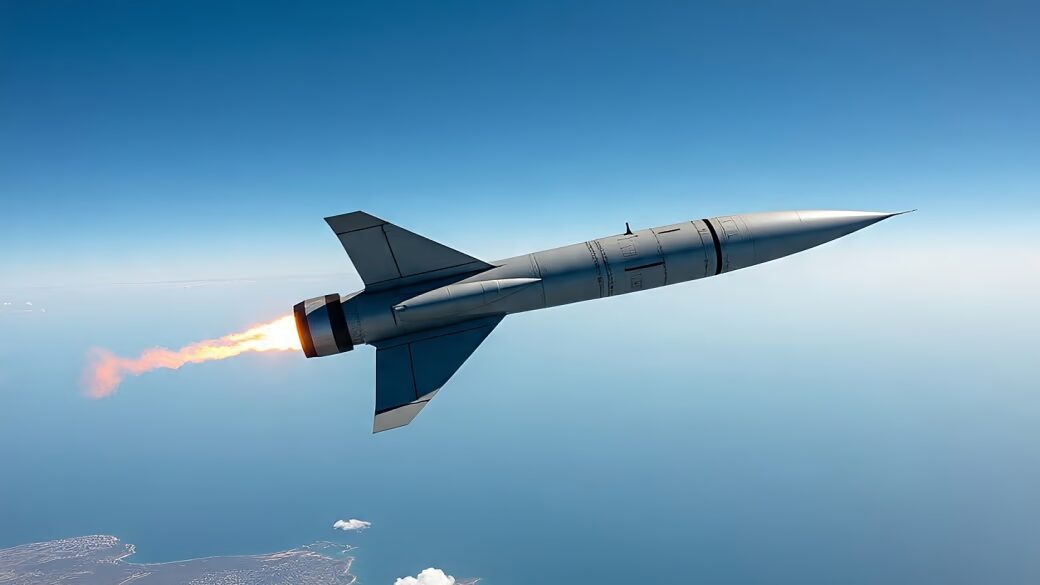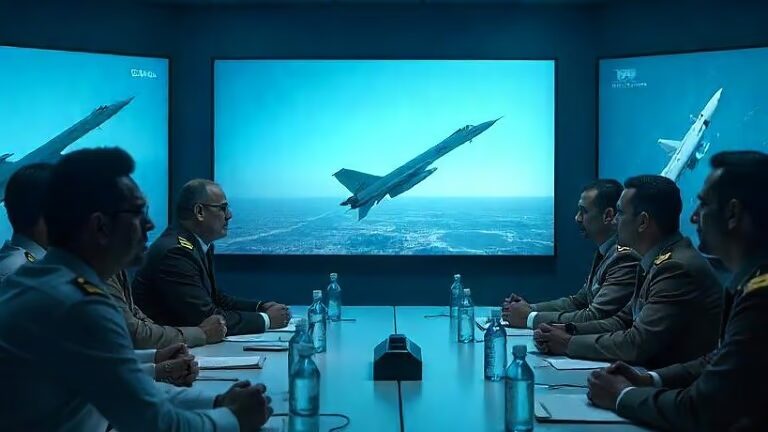
In the ever-shifting chessboard of geopolitics, nations don’t just flex muscles through military parades or sharp words—they do it through smart, calculated upgrades to their defence arsenals. And this silent yet powerful move is now unfolding in India.
It’s sleek. It’s fast. It’s accurate. And it could quietly transform how India deals with threats across its borders.
ALSO READ- Are India’s Interests at Risk? A Case Study on US-Pakistan Relations
LORA: More Than Just a Missile-
At first glance, the LORA (Long-Range Artillery) missile looks like just another piece of high-tech warfare hardware. But once you dig deeper, you begin to understand why military experts in Delhi are so intrigued.
LORA isn’t just about brute force—it’s about finesse. Launched from aircraft, this missile can travel over 400 kilometres, punching through enemy defences and hitting its target with pinpoint precision. And it does all this while staying mostly invisible to enemy radars, thanks to its lofted ballistic trajectory.
Now imagine a fighter jet flying safely within Indian airspace, quietly locking on to a target hundreds of kilometres away, and launching LORA. Minutes later, a target deep inside hostile territory is reduced to rubble—without the jet ever crossing a border. That’s the kind of edge LORA promises.
Why Now? What Changed?
India already has BrahMos—a missile system known globally for its speed and power. So, what’s pushing the IAF to look elsewhere?
Well, modern warfare isn’t a one-size-fits-all game anymore. It’s about flexibility. It’s about having options.
BrahMos is great, fast, reliable, and also deadly at low altitudes. But sometimes, a situation calls for a missile that can rise high into the sky, take a long and curved path, and drop straight down on its target like a hammer from the heavens. That’s LORA’s style. It complements BrahMos, not competes with it. And then there’s the increasing focus on “stand-off warfare.” With enemy air defence systems getting sharper by the day, the IAF is pushing to keep its pilots safe. The idea is simple: hit far, hit fast, hit hard—and stay out of danger.

The Su-30MKI and LORA: A Match which is Made in the Skies-
If LORA makes it to the Indian arsenal, it’s likely to be paired with India’s heavyweight fighter—the Su-30MKI. This aircraft isn’t just a jet; it’s a flying fortress. Big, powerful, and capable of carrying a heavy load, it’s the perfect partner for a missile like LORA.
Think of it as giving a sniper rifle to a strong, battle-hardened warrior.
Imagine a squadron of Su-30MKIs flying missions that are armed with LORA missiles. One aircraft alone could strike multiple enemy targets across a vast area, all while staying far from enemy territory. It’s not just about striking; it’s about doing it smartly, with minimum exposure and maximum effect.

Not Just Buying—Building Too-
One of the most exciting parts of this development is India’s plan to not just import the LORA, but to build it locally. This isn’t just about national pride; it’s also a strategic move.
By building LORA within India, we reduce our dependence on foreign suppliers. We gain access to cutting-edge missile tech. We create jobs. And most importantly, we send a message to the world: India isn’t just a buyer in the global defence market. It’s a builder, an innovator, and a serious player.
The plan reportedly involves teaming up with Indian companies for local manufacturing, possibly even exporting the missile to friendly countries in the future. It’s a win-win.
Shifting Regional Power Balance-
Now let’s look at the bigger picture. So, what does this mean in terms of regional security?
For starters, it significantly upgrades India’s ability to respond to threats from China or Pakistan. It gives the IAF the power to target command centres, airbases, or supply lines without risking the lives of its pilots. In tense border situations, this kind of capability could tilt the balance.
Also, LORA adds a psychological edge. Knowing that India can strike accurately and deeply, even before a conflict escalates, might just make an adversary think twice before making the first move.
But It’s Not All Smooth Sailing
Let’s be clear—no weapon system is perfect, and LORA will come with its own challenges.
Integration with Indian aircraft, testing in diverse weather and terrain, and training personnel to handle such advanced tech will take time. There’s also the cost factor—missiles like LORA don’t come cheap. But considering the potential payoff in operational flexibility and strategic deterrence, the investment might just be worth every rupee.
There’s also the bigger question of how it fits into India’s evolving defence doctrine. With multiple missile programs already running—including Pralay and BrahMos—military planners will need to carefully position LORA in the larger jigsaw puzzle of national security.
The Road Ahead-
If things go as planned, the first LORA-equipped jets could be operational within the next two years. That means by 2026 or 2027, the Indian Air Force could have a brand-new strike capability—silent, swift, and precise.
More importantly, this isn’t just about having a new missile in the shed. It’s about changing how we fight. It’s about keeping our soldiers safer, our borders more secure, and our enemies always guessing.
LORA represents more than technology. It reflects India’s growing confidence on the global stage, its commitment to self-reliance, and its willingness to think a step ahead when it comes to national defence.
Final Thoughts-
In today’s world, where conflicts can flare up with a tweet and battles can be won or lost in minutes, staying prepared isn’t a luxury—it’s survival. The LORA missile isn’t a silver bullet, but it’s absolutely a sharp one.
As India continues to modernise its military, the addition of LORA could quietly become one of the most important upgrades of this decade, giving the IAF the power to strike smart, strike deep, and strike first, if needed.
And that’s a future worth aiming for.
